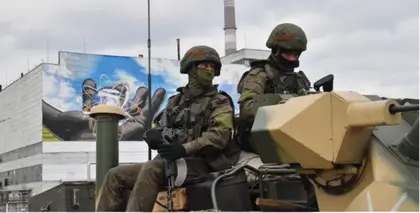Russian soldiers invading Ukraine in Feb. 2022 ignored station worker warnings to avoid terrain contaminated by radiation from the Chornobyl Nuclear Power Plant accident, and hundreds of them lived for more than a month in trenches dug into ground saturated with potentially lethal isotopes, eyewitnesses and nuclear scientists said.
Valeriy Semenov, Security Chief at the Chornobyl Nuclear Power Plant from Feb. 23 - April 3, 2022, in an interview with Kyiv Post, said Russian troops entering the premises showed little interest in research compiled over almost two decades on fallout and hot spot sites around the station.
JOIN US ON TELEGRAM
Follow our coverage of the war on the @Kyivpost_official.
Chornobyl’s reactor No. 4 exploded, caught on fire, and dumped catastrophic volumes of radioactive dust into the land around it and into the atmosphere following an April 26, 1986, failed maximum power test. It was the worst nuclear power accident in history.
Russian aircraft, in the first hours of the Kremlin’s Feb. 24, 2022 invasion of Ukraine, ignored longstanding no-fly rules into air space above the plant, and Russian armored columns used roads cutting straight across a 2,500 kilometer-square (1,553 mile-square) exclusion zone rigged with barbed wire fences and radiation warning signs.
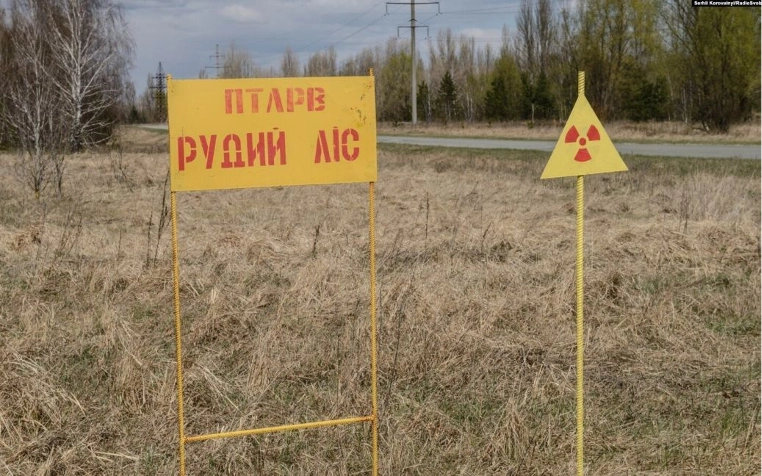

Ukraine's Future: The Path to Victory
“Subsequently, Russian aircraft began flying, passing just 30 meters [98 feet] above the station. They traversed over the power unit, including the reactor that was destroyed in 1986,” Semenov said. “Despite nuclear power plants being deemed closed zones under international law, with overflights of any aircraft prohibited, they disregarded these regulations.”
Ukrainian plant workers said 200-300 Russians with weapons and combat vehicles were stationed inside the station premises, where they constructed fighting positions and dugouts. Images published by the Ukrainian state-run news agency Ukrinform showed trenches dug to the height of a man and two-meter-tall (6.5-feet-tall) Hesco-type military barriers filled with Chornobyl sand lacing open ground around station buildings. A technician states the dirt the Russians excavated is irradiated four or five times safe levels.
Vasyl Davydenko, a hunter and bio-researcher working 25 years in the Exclusion Zone, said that Russian soldiers looted houses and offices – including sites abandoned in 1986 – taking furnishings, chairs and even carpets. Volodymyr Ishchuk, a worker at a station shop said there was not a single building in the exclusion area that was not broken into, and that Russian soldiers ignored radiation warnings to carry off everything from abandoned vehicles to snow shovels, and even signs warning – in Russian – the location was dangerous and objects within it potentially hot.
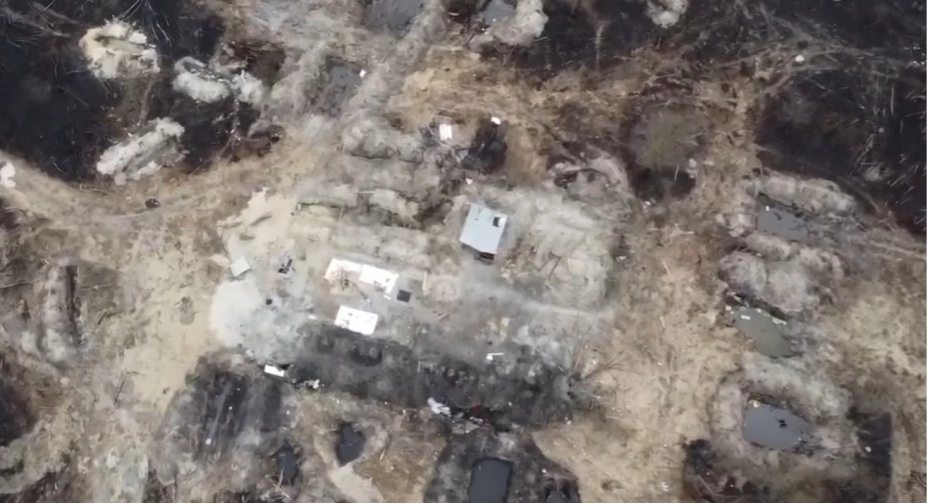
“All that equipment that carried radiation…and they took it them with them,” Ishchuk said in comments published in April 2023 by the NGO Ukrainian Witness.
Some Russian troops dug into Chornobyl’s notorious Red Forest, a 10-kilometer-square (6-mile-square) patch of uninhabited woods that, in April 1986, took the brunt of downwind radiation, by some estimates an order magnitude worse than radiation released from the 1945 atomic bombing of Hiroshima Japan. Soviet emergency workers later covered the entire territory with a layer of sand to contain the highly radioactive dust. Even with the protective layer on top of it, even by the late 2010s standing for more than a few minutes anywhere in the Red Forest was dangerous, and the longer one was exposed, the greater the danger.
Between 200 and 500 Russian combat troops, according to subsequent counts, burrowed into the Red Forest territory to construct temporary living sites in March 2022, because the Kremlin’s assault on Kyiv at the time was going poorly and troop planners had expected to quarter inside the Ukrainian capital had nowhere to live. According to Ukrainian officials at the time, the Russian army occupied the Chornobyl area with at least a brigade of combat units along with police and support troops, a total force numbering as many as 2,000 service personnel deployed long-term to the region.
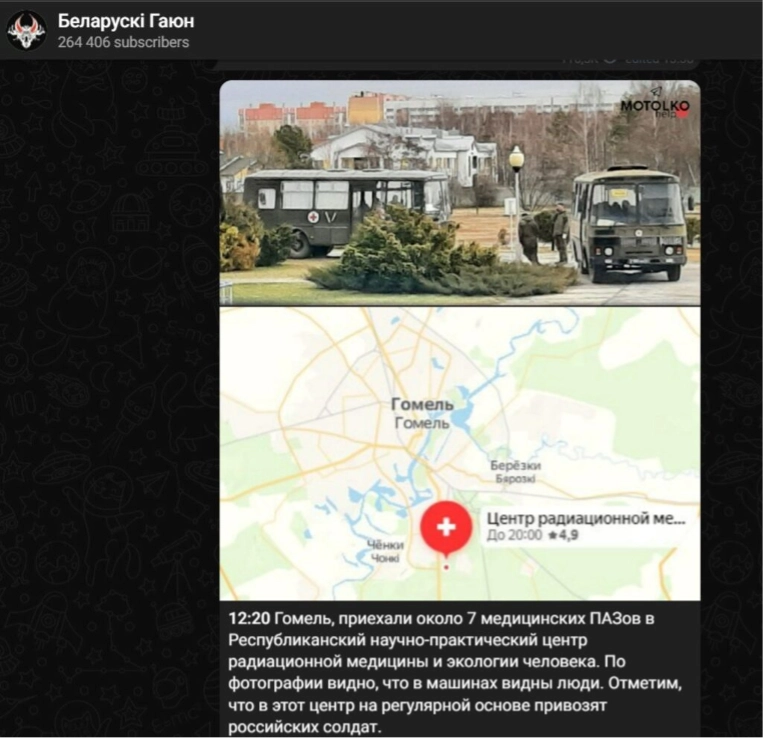
An unknown portion of Russia’s 36th Combined Arms Army, a major formation on paper containing around 35,000 soldiers and officers, passed through the Exclusion Zone area as part of an ultimately unsuccessful Kremlin bid to conquer the Ukrainian capital of Kyiv.
Ukraine’s Minister of Energy, German Galushchenko, speaking to reporters following Russia’s early April retreat from northern Ukraine including the Chornobyl station said that Russian soldiers who dug into the Red Forest not only exposed themselves to radiation but helped irradiate their comrades by filling sandbags with dirt excavated in the area, for the construction of defensive positions around the station itself, and defensive reinforcement of power station offices occupied by Russian officers. Smaller personal items taken from lethally irradiated buildings sometimes were handed over to Russian officers as souvenirs, who then spent weeks with items contaminated with deadly but invisible radiation, sometimes on their desks, he said.
“They stole some decorative deer antlers from an (abandoned) Police Department building. They had been hanging on the wall there since 1986 and they were so irradiated it was just a disaster. Probably it was a gift to some general. So someone (member of the Russian occupation force) hung it over his bed….the Geiger Counter goes off the scale,” Galushehnko said, in comments reported by the LB.UA news platform.
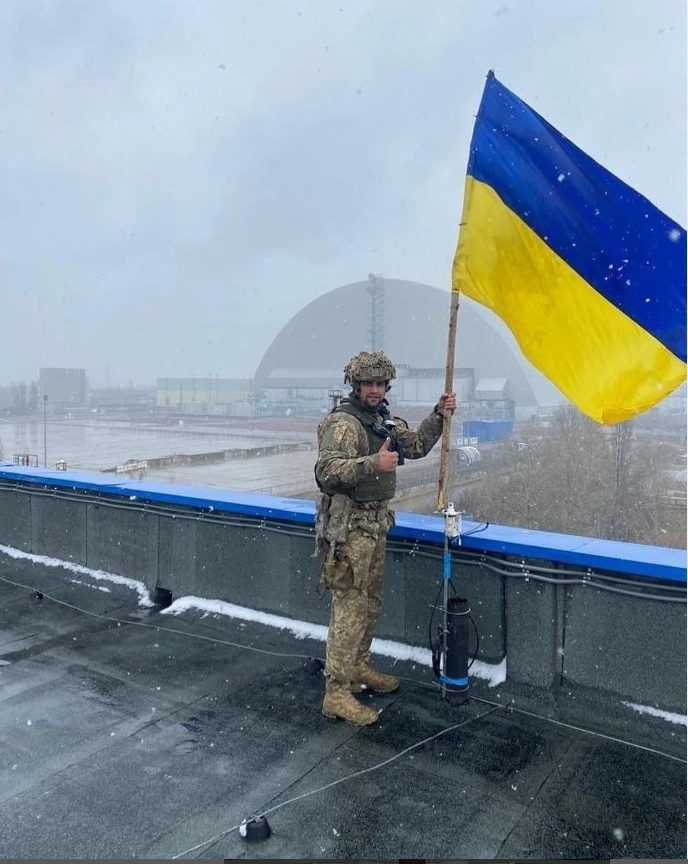
“The occupation was led by the Bryansk OMON (a specialized unit of the Russian police) and units of the 155th Marine Brigade from Siberia, comprised of Buryats, stationed outside the facility,” Semenov said. “They endured conditions devoid of water and electricity, they lived outside and were subjected to high doses of radiation. It’s hard to believe but it later was confirmed that they were excavating trenches in the forest adjacent to the station, known to be radioactive. They rotated troops in and out of the dugouts, where they slept and lived – in their contaminated clothing...Sometimes they laundered their clothes and then hung the clothes on (irradiated) barbed wire surrounding the station, which has been there since 1986. When the clothes dried they put them on.”
“They (the Russian troops) had no idea that this is radiation. That it is harmful. They believed that if nothing happened immediately, then everything was fine. They did not think about the consequences in the future,” a National Guardsman identified as Anatoliy told the research group Media Initiative of Human Rights. “Once a radiation specialist from the Russian Federation came and told (captive Ukrainian nuclear station technicians) that his mother-in-law is from the Briansk Forest (in Belarus), that the radiation there is much higher than we have at Chornobyl and that… ‘Everything is normal, everything is fine, there is no radiation.’”
Russian soldiers expanded chances of contaminating themselves and others by cutting down trees, chopping them into wood, burning it, and then eating food cooked over the campfires, Serhii Kireev, a spokesman for state ecological survey group Ekocentr said.
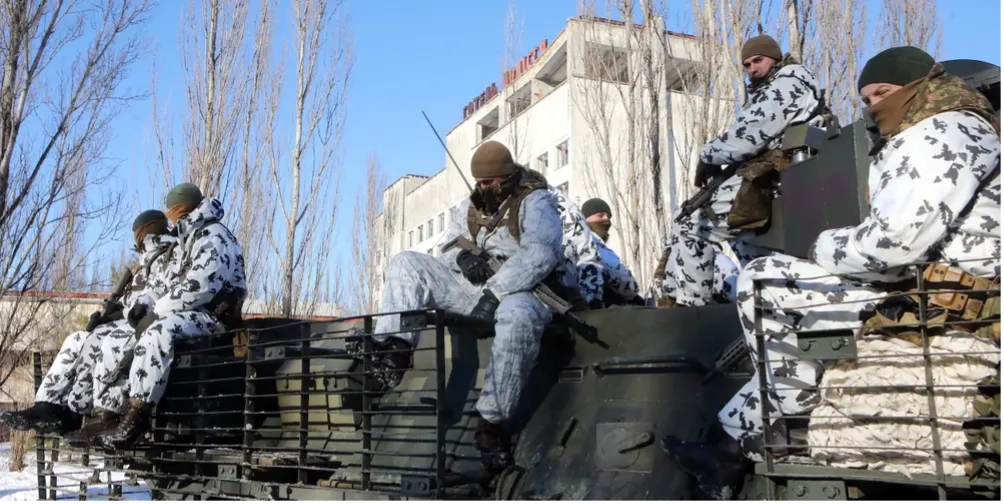
According to a Russian army statement published March 31, 2023, and widely reported across Ukrainian media, the first Russian soldier in the “Special Military Operation” (the Kremlin’s term for the Russo-Ukrainian War) died within weeks of being exposed to dangerous radiation in the Chornobyl Exclusion Zone, and that, as of early April 26, more soldiers were hospitalized with radiation sickness – with 73 in severe condition.
Subsequent Russian social media reports have placed numbers of soldiers reporting symptoms of radiation sickness to their chains of command as probably in the hundreds.
Oleksander Menzul, a Ukrainian nuclear engineer, in a Feb. 29 interview with the state-run news agency Ukrinform said that two years later, the chances that any of the Russian soldiers who spent weeks dug into the Red Forest survived to today, are nil.
“You can also remember how the illiterate orcs [derogatory term for Russian soldiers] dug in the Chornobyl zone (in the radioactive Red Forest - ed.). I know this place, you can stay there for a few minutes. As it happens, we (Ukrainian nuclear scientists) have received information through our professional channels,” Menzul said. “None of the Russian soldiers who were there survived.”
You can also highlight the text and press Ctrl + Enter


